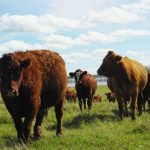There has been a resurgence of the chicken in the country.
Small flocks of 20 to 30 chickens are returning as part of farm and acreage life.
During the last two decades, the shift of egg and meat production into intensive production led to fewer chickens on the country landscape.
Today’s resurgence could be credited to several factors: the trend toward organic or free-range production, a desire for fresher eggs, or possibly the wholesome image of chickens pecking about the farmyard.
New research may also have rejuvenated interest in eggs. A recent study showed that cholesterol in eggs is the good type.
Read Also

Crop insurance’s ability to help producers has its limitations
Farmers enrolled in crop insurance can do just as well financially when they have a horrible crop or no crop at all, compared to when they have a below average crop
The study found that people who ate five to six eggs per week had a lower risk of heart disease than those who ate less than one egg per week.
As chickens have returned, many are dual purpose breeds, bred for both meat and egg production.
These heritage breeds have retained a natural instinct for foraging, making them suited for their farm lifestyle.
My favourite is the Red Rock. Their quiet, calm nature and iridescent black feathers are charming.
For people wanting to start their own chicken coops, the most important step is to buy thriving day-old chicks. Order hens because roosters do not lay eggs and are often loud and aggressive.
Before the chicks arrive, set up a brooder box with a heat lamp in a warm coop.
The brooder lamp can be set at 45 centimetres from the ground surface and adjusted according to the chicks’ age and comfort.
Cold chicks crowd under the heat lamp and crowd along the outer circle when they are too warm. A warm coop temperature of 20-25 C allows the chicks to use the heat lamps.
A well-ventilated, draft-free area bedded with straw or shavings is recommended. Continue to add bedding as needed to provide a dry surface for the chicks.
Chicks should always have access to feed and fresh, clean water. Ensure the chicks are eating and drinking upon arrival.
It may be necessary to dip a few beaks in the water. These chicks will then teach the other chicks where the water is.
It is best to feed a commercial starter for six to eight weeks. Then switch to a grower ration, with a mix of barley, oats and wheat.
When the first egg comes at 20-24 weeks, change to a layer ration and a mixture of barley, oats and wheat.
Outside, hens are able to pick up gritty sand they need to digest food, but giving them a crushed oyster shell supplement provides extra calcium for strong eggshells.
One hen will lay five to six eggs a week. Their egg production varies with daylight hours, temperature, age, seasonal moult and feed.
A 20 percent decrease in egg production can be expected every year. However, flavour as stewing chickens increases as they age.
Chickens can be allowed access to the outdoors once they reach one month of age. Protection from pedators such as dogs, foxes, coyotes and hawks is necessary.
The birds are excellent for pest control, eating grasshoppers, bugs, and fly larvae and act as mini-culivators by scratching and aerating the earth.
Apparently, chickens are also Feng Shui masters. Feng Shui is that ancient Chinese art of bringing balance into our environment, giving particular attention to flow of energy.
Carol Shwetz is a veterinarian practising in Westlock, Alta.















